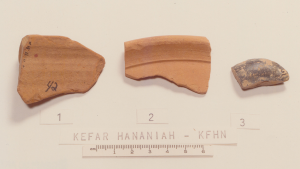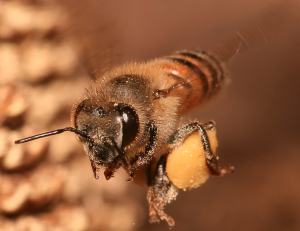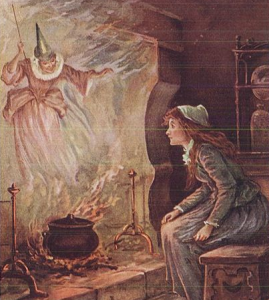We have more information available to us, living in our pockets than ever burned to ash at Alexandria. This access to knowledge, about everything, from star charts to mortality rates to the migratory patterns of swallows is incredible. Take a minute to step away from the cat videos and explore these fascinating data sets at your fingertips.
1. The Digital Archaeological Record
 The Digital Archaeological Record lets you recast yourself as an armchair Indiana Jones. Through this non-profit organization, you can search through vast public records of worldwide archeological data. Their mission is expansive. Digital Antiquity supports archaeological research, resource management, education, and public outreach by providing new and innovative ways of finding, managing, preserving, and using archaeological information.
The Digital Archaeological Record lets you recast yourself as an armchair Indiana Jones. Through this non-profit organization, you can search through vast public records of worldwide archeological data. Their mission is expansive. Digital Antiquity supports archaeological research, resource management, education, and public outreach by providing new and innovative ways of finding, managing, preserving, and using archaeological information.
In its stores, you can find photographs, maps, data sets, analysis of all sorts — from locations in Israel to New Philadelphia, Indiana. If they don’t have the physical document scanned in, you can find exactly where it’s stored. Ultimately, you have the tools to find the history of almost any people, anywhere.
2. Bees
 Our survival as a race is intertwined with bees. We depend on them to pollinate our plants. Without the work of bees, bats, and butterflies, crops like avocados, apples, and onions would disappear. One third of all food eaten in the US is directly or indirectly pollinated by bees. If you like food, thank a bee.
Our survival as a race is intertwined with bees. We depend on them to pollinate our plants. Without the work of bees, bats, and butterflies, crops like avocados, apples, and onions would disappear. One third of all food eaten in the US is directly or indirectly pollinated by bees. If you like food, thank a bee.
During the 2012-2013 winter, 31% of all US-managed bees died. The numbers aren’t in yet for this past year — but because of the cold alone, they aren’t expected to be good. So far, researchers haven’t determined one definitive cause for our bee losses; it’s been pegged Colony Collapse Disorder.
As more information comes in, beekeepers have a better chance of discovering what can be done. You can explore this data set yourself, and even participate in the collection of bee data with The Bee Informed Partnership.
3. The Brothers Grimm: Storytellers & Database Builders
 In 1812, Jacob and Wilhelm Grimm published “Children and Household Tales.” They wrote the book with the intention of celebrating German culture and values through the oral traditions of the people. They traveled for years, gathering folk stories before releasing their first volume, intending it for scholarly analysis.
In 1812, Jacob and Wilhelm Grimm published “Children and Household Tales.” They wrote the book with the intention of celebrating German culture and values through the oral traditions of the people. They traveled for years, gathering folk stories before releasing their first volume, intending it for scholarly analysis.
It turned, against their original intentions, into a bestseller for children. On the release of a second, expanded volume, the brothers sanitized the stories rather than simply recording them, toning down the violence and inserting more moralizing.
These collected stories hit as literacy rates were rising, democratizing access to common folk tales. They showed the values and common beliefs of a people. These shared stories are intertwined into our understanding of ourselves. Who doesn’t know what a Cinderella story is?
What makes this particular data a set so fun is that as you follow these stories back 200 years, you start seeing how they have evolved. In the Grimm version, the Stepsisters chop off their toes to wear the glass slipper before ultimately having their eyes pecked out by wild birds as punishment for their evil. The Cinderella story brought to life by Walt Disney emphasizes romance. If you read through the hundreds of stories, you’ll see the building blocks of our shared imagination.
4. John Snow’s Cholera Map
In the 1850’s, common thinking was that cholera was caused by a mysterious “miasma” in the air. This infection of the small intestine was a nasty, quick killer. In 1854, when Cholera spread through London neighborhoods, 616 people died within weeks.
John Snow (turns out he does know something) performed the first ever epidemiology study, mapping out the incidents of disease. His data led him discover the actual, physical cause of the disease: water contaminated with raw sewage. One water pump was the culprit. Finding the root cause of the illness meant it was preventable. That pump was taken out of service. We’re all the beneficiaries of his study.
5. StoryCorps
 StoryCorps is an independent nonprofit that’s been collecting stories of regular American’s lives since 2003. They’ve amassed more than 45,000 stories. That’s 18 Terrabytes of media stored. You can search the audio database by theme, location, occupation, time, or any other number of things.
StoryCorps is an independent nonprofit that’s been collecting stories of regular American’s lives since 2003. They’ve amassed more than 45,000 stories. That’s 18 Terrabytes of media stored. You can search the audio database by theme, location, occupation, time, or any other number of things.
They’re creating the data of us. Anyone can search the reaction to a big news event, or discover attitudes towards family, money, or politics. Listening through this everyday data is both informative and moving.
6. Gapminder
Gapminder, and Hans Rosling have a big mission, “to fight devastating ignorance with fact-based worldviews everyone can understand.” The information incorporated into Gapminder is extensive: including worldwide statistics on life expectancy, family size, income, land use, alcohol use, drownings…there are 519 indicators for countries covering the globe.
We think we know things. Hans Rosling, while teaching in Sweden, gave his students a quiz. He paired five European countries with five Asian countries, and asked them to pick which of each pair had twice the child mortality rate of the other. The results were worse than random. He says chimpanzees would have done a better job of randomly grabbing at the right answer.
Gapminder wants us to do better, assume less, and know more. The information isn’t just for data scientists and statisticians – the website includes tutorial videos so anyone can understand it, and lessons for teachers who want to use world data in their classrooms.
Ending ignorance is a big job; Gapminder makes it easier to do your part.
7. Your Grandma
Okay, so your grandma isn’t a data set. But, she might have accumulated one.
In the past, before all our constant distractions were invented, when radio was king, journaling was extremely popular. It’s common for these old diaries to include the daily weather, information about crops, or what was sold in a store, or hunted, or personally produced in a factory. You might find details on every date she had before she was married. Or what she repurposed into new dresses during the war.
The diaries of previous generations reveal a lot; where we’ve been, how we got here. We’re no strangers now to self-chronicling. In fact, between Instagram, Foursquare, Facebook, Twitter, FitBit, we’re self tracking massive amounts of data about ourselves, both intimate and mundane. Sitting down with an old family diary and examining it against your own data diary might stir up some new insights into your life and family.
We’re not recommending breaking into Grandma’s bookshelf; but you could call and ask. Mother’s Day is coming. She’ll be glad to hear from you.
